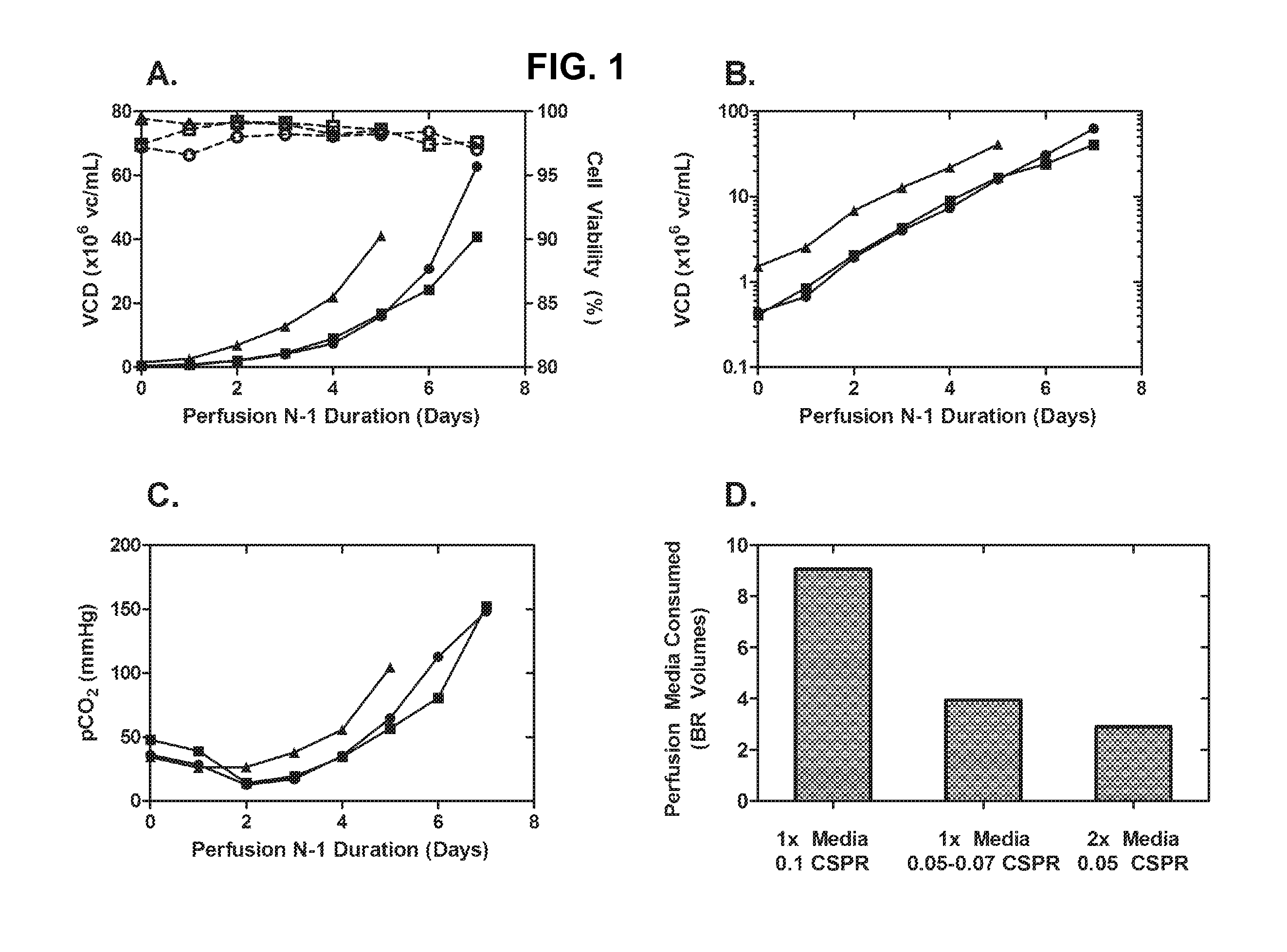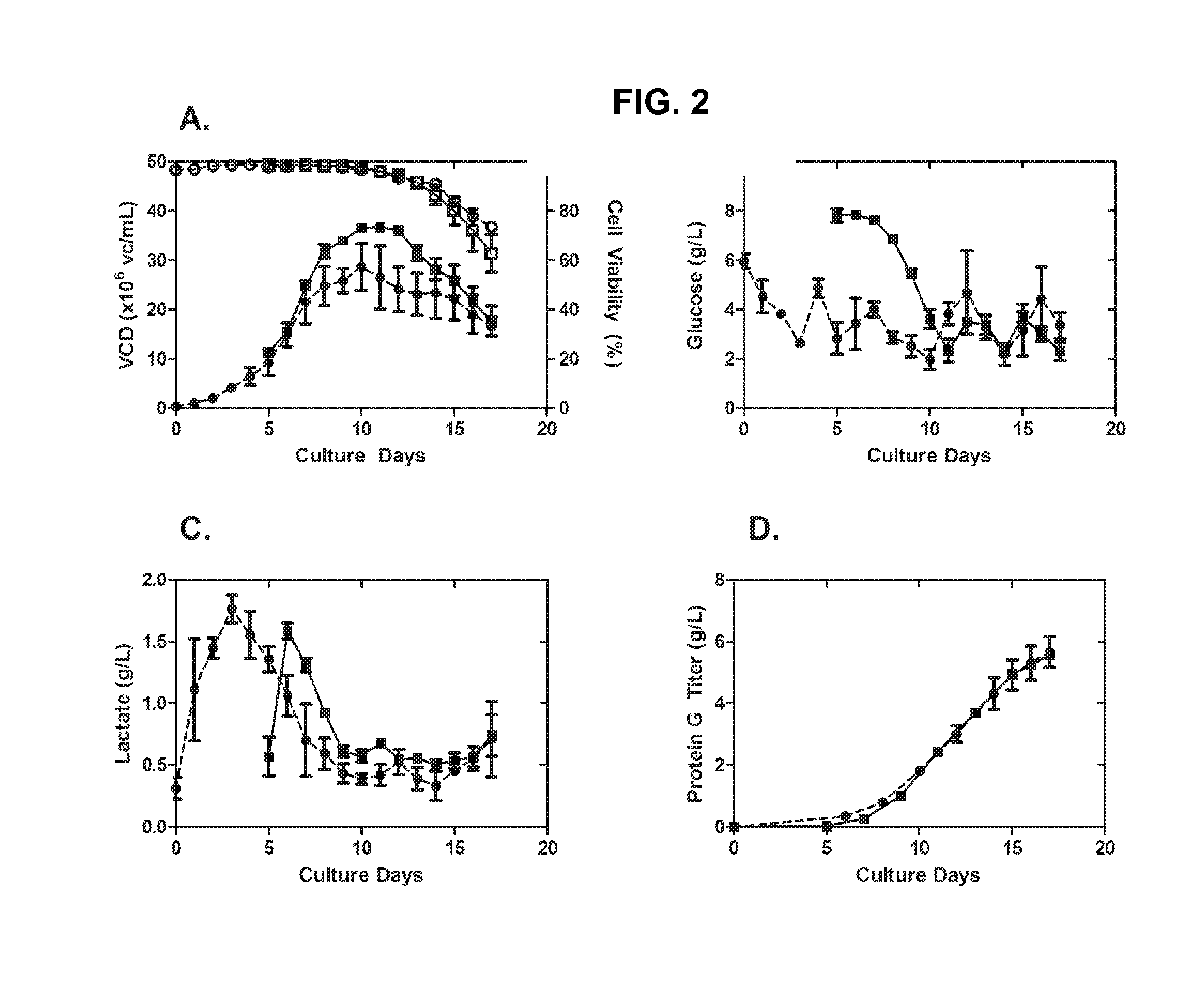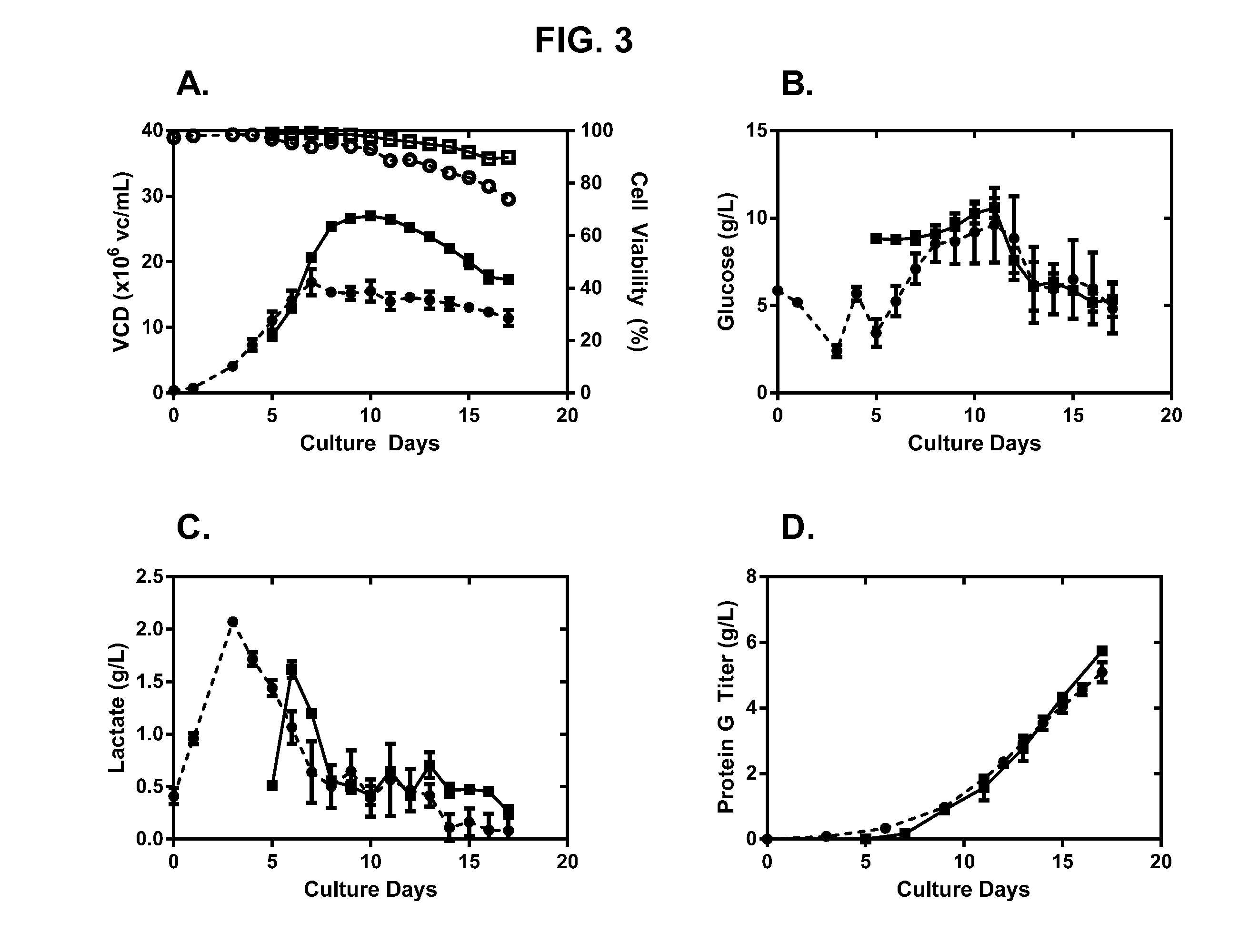Use of Perfusion Seed Cultures to Improve Biopharmaceutical Fed-Batch Production Capacity and Product Quality
a technology of biopharmaceutical and perfusion seed, which is applied in the direction of biochemistry apparatus and processes, peptides, immunoglobulins, etc., can solve the problems of reducing the output rate, inefficient production bioreactor utilization, and low volumetric productivity of the production process, so as to improve the yield rate and yield rate, the effect of high viable cell density
- Summary
- Abstract
- Description
- Claims
- Application Information
AI Technical Summary
Benefits of technology
Problems solved by technology
Method used
Image
Examples
example 1
Cell Lines and Culture Methods
[0185]Cell Lines and Media
[0186]Three different CHO cell lines producing three different recombinant protein products were used in these experiments. Cell lines A and B produce monoclonal antibodies and cell line C produces an Fc fusion protein. The chemically-defined basal and feed media used in this study were as described in Huang et al., “Maximizing productivity of CHO cell-based fed-batch culture using chemically defined media conditions and typical manufacturing equipment.”Biotechnology Progress 2010, 26, (5), 1400-10, incorporated by reference herein in its entirety.
[0187]Seed Cultures
[0188]All three cell lines were thawed and grown as previously described (Huang et al., supra, and Kshirsagar et al., “Controlling trisulfide modification in recombinant monoclonal antibody produced in fed-batch cell culture.”Biotechnology and Bioengineering 2012, 109, (10), 2523-32, incorporated by reference herein in its entirety.) Cells were passaged in 1 L or 3 ...
example 2
Cell Line A: N-1 Perfusion Optimization
[0202]Cell line A was used as the model system for perfusion N-1 optimization. In the first iteration of perfusion N-1, we performed a 7-day N-1 perfusion culture using a 1×-concentrated chemically-defined basal media. The cell-specific perfusion rate (CSPR) was 0.1 nL cell−1 day−1. Cells grew exponentially to greater than 60×106 vc / mL and maintained high viability (FIG. 1A). However, the initial perfusion N-1 process was sub-optimal due to high accumulation of pCO2 and high consumption of the perfusion media (FIG. 1C, D).
[0203]We first sought to reduce the volume of perfusion media perfused by reducing the CSPR. Reducing the CSPR greatly reduced the media consumption, but led to stunted growth and did not resolve the pCO2 accumulation. Furthermore, the 0.05 nL cell−1 day−1 CSPR had to be increased to 0.07 during the culture due to sub-optimal (poor) growth.
[0204]After observing sub-optimal results at 0.05 nL cell−1 day−1 CSPR using 1×-concentr...
example 3
Cell Line A: High-Seed Fed-Batch Production
[0205]High-seed (10×106 vc / mL) fed-batch production cultures were fed daily using chemically-defined feed media as described above. If we align Day 0 of the high-seed process with Day 5 of the low-seed process, the performance of the high-seed cultures track that of the low-seed culture in VCD, viability, glucose consumption, lactate generation, and protein production (FIG. 2). The high-seed process was able to reach the same harvest titer as the low-seed process, generating 5 g / L of antibody in just 12 days, compared with 17 days for the low-seed process. Furthermore, protein aggregation and charge heterogeneity were not affected by high-seed culture conditions (see Table 1, below).
PUM
| Property | Measurement | Unit |
|---|---|---|
| volume | aaaaa | aaaaa |
| volume | aaaaa | aaaaa |
| volume | aaaaa | aaaaa |
Abstract
Description
Claims
Application Information
 Login to View More
Login to View More - R&D
- Intellectual Property
- Life Sciences
- Materials
- Tech Scout
- Unparalleled Data Quality
- Higher Quality Content
- 60% Fewer Hallucinations
Browse by: Latest US Patents, China's latest patents, Technical Efficacy Thesaurus, Application Domain, Technology Topic, Popular Technical Reports.
© 2025 PatSnap. All rights reserved.Legal|Privacy policy|Modern Slavery Act Transparency Statement|Sitemap|About US| Contact US: help@patsnap.com



